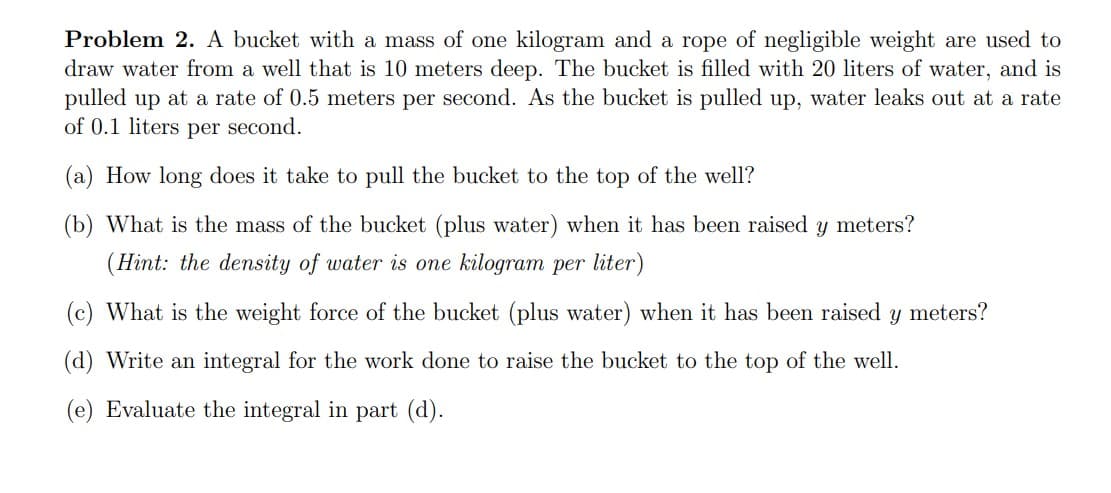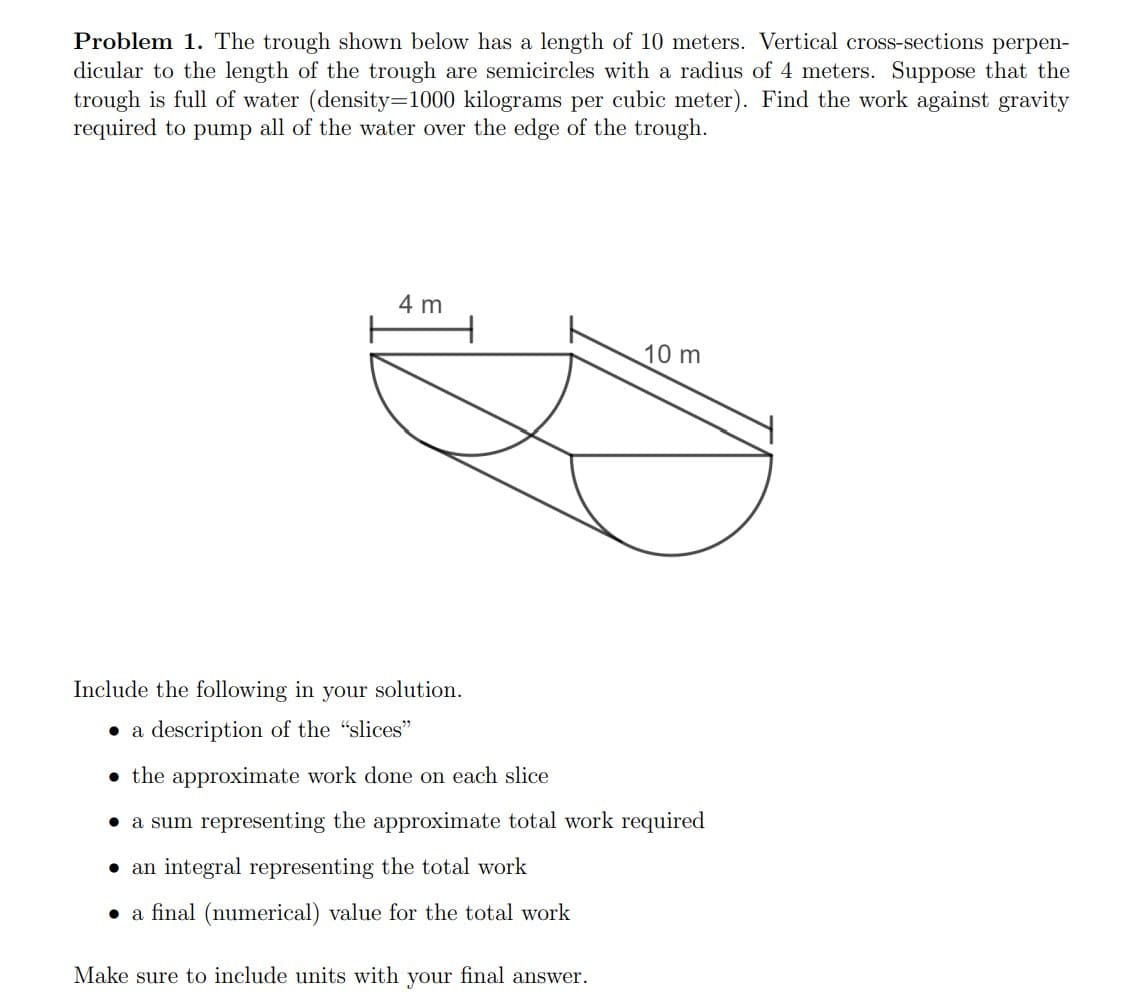Problem 2. A bucket with a mass of one kilogram and a rope of negligible weight are used to draw water from a well that is 10 meters deep. The bucket is filled with 20 liters of water, and is pulled up at a rate of 0.5 meters per second. As the bucket is pulled up, water leaks out at a rate of 0.1 liters per second. (a) How long does it take to pull the bucket to the top of the well? (b) What is the mass of the bucket (plus water) when it has been raised meters? (Hint: the density of water is one kilogram per liter) (c) What is the weight force of the bucket (plus water) when it has been raised y meters? (d) Write an integral for the work done to raise the bucket to the top of the well. (e) Evaluate the integral in part (d).
Problem 2. A bucket with a mass of one kilogram and a rope of negligible weight are used to draw water from a well that is 10 meters deep. The bucket is filled with 20 liters of water, and is pulled up at a rate of 0.5 meters per second. As the bucket is pulled up, water leaks out at a rate of 0.1 liters per second. (a) How long does it take to pull the bucket to the top of the well? (b) What is the mass of the bucket (plus water) when it has been raised meters? (Hint: the density of water is one kilogram per liter) (c) What is the weight force of the bucket (plus water) when it has been raised y meters? (d) Write an integral for the work done to raise the bucket to the top of the well. (e) Evaluate the integral in part (d).
Mathematics For Machine Technology
8th Edition
ISBN:9781337798310
Author:Peterson, John.
Publisher:Peterson, John.
Chapter29: Tolerance, Clearance, And Interference
Section: Chapter Questions
Problem 13A: Refer to Figure 29-9 to determine the values in the table. Allowance is equal to the maximum...
Related questions
Question

Transcribed Image Text:Problem 2. A bucket with a mass of one kilogram and a rope of negligible weight are used to
draw water from a well that is 10 meters deep. The bucket is filled with 20 liters of water, and is
pulled up at a rate of 0.5 meters per second. As the bucket is pulled up, water leaks out at a rate
of 0.1 liters per second.
(a) How long does it take to pull the bucket to the top of the well?
(b) What is the mass of the bucket (plus water) when it has been raised y meters?
(Hint: the density of water is one kilogram per liter)
(c) What is the weight force of the bucket (plus water) when it has been raised
meters?
(d) Write an integral for the work done to raise the bucket to the top of the well.
(e) Evaluate the integral in part (d).

Transcribed Image Text:Problem 1. The trough shown below has a length of 10 meters. Vertical cross-sections perpen-
dicular to the length of the trough are semicircles with a radius of 4 meters. Suppose that the
trough is full of water (density=1000 kilograms per cubic meter). Find the work against gravity
required to pump all of the water over the edge of the trough.
4 m
10 m
Include the following in your solution.
• a description of the "slices"
• the approximate work done on each slice
• a sum representing the approximate total work required
• an integral representing the total work
• a final (numerical) value for the total work
Make sure to include units with your final answer.
Expert Solution
This question has been solved!
Explore an expertly crafted, step-by-step solution for a thorough understanding of key concepts.
This is a popular solution!
Trending now
This is a popular solution!
Step by step
Solved in 2 steps

Knowledge Booster
Learn more about
Need a deep-dive on the concept behind this application? Look no further. Learn more about this topic, calculus and related others by exploring similar questions and additional content below.Recommended textbooks for you

Mathematics For Machine Technology
Advanced Math
ISBN:
9781337798310
Author:
Peterson, John.
Publisher:
Cengage Learning,

Mathematics For Machine Technology
Advanced Math
ISBN:
9781337798310
Author:
Peterson, John.
Publisher:
Cengage Learning,